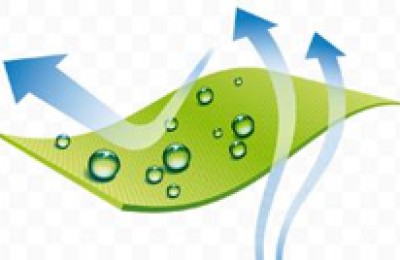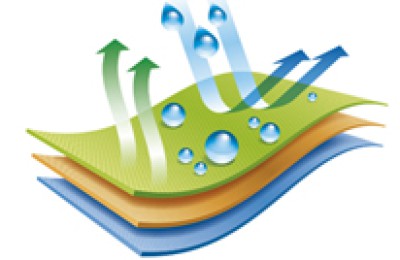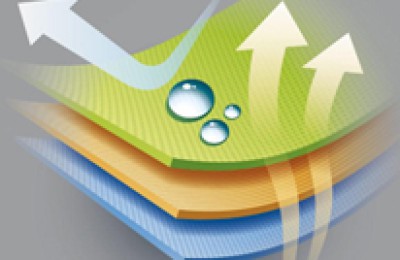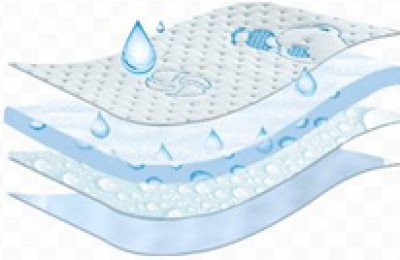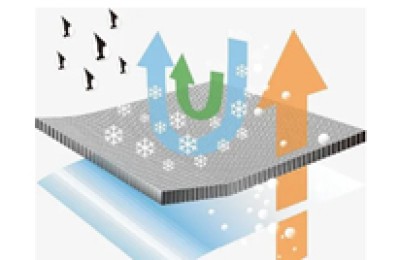Research on antibacterial functional fabrics
Research on antibacterial functional fabrics
Generally speaking, antibacterial textiles can be achieved through two technical approaches, using functional finishing methods and directly using antibacterial fibers for development. Although the use of functional finishing methods is convenient and can achieve antibacterial purposes, chemical finishing will affect the style and feel of the fabric. Therefore, directly using antibacterial fibers to research and develop antibacterial textiles is currently a key development direction. The antibacterial fibers selected and studied in this article include nano-silver antibacterial polyester fiber, chitin fiber with natural antibacterial properties, bamboo fiber and bamboo carbon fiber.
In order to explore the antibacterial properties of each antibacterial fiber, special fabric samples were trial-produced, their antibacterial properties were tested and compared, and the relationship between each antibacterial raw material and antibacterial properties was studied. The antibacterial efficacy was tested using the shaking flask method in accordance with national standards, and the test strains were Escherichia coli and Staphylococcus aureus.
1Introduction to antibacterial performance side test methods
Antibacterial fabrics have a special quality testing index, namely antibacterial efficacy. A variety of evaluation experimental methods have been proposed at home and abroad for the determination of antibacterial efficacy. However, these methods have some defects and have certain limitations in their scope of application. Antibacterial agents can be roughly divided into two types: the dissolving type (the antibacterial agent on the fabric can slowly dissolve in water) and the non-dissolving type (the antibacterial agent is combined with the fiber and cannot be dissolved). The corresponding representative antibacterial performance testing methods are: ” The experimental method for the antibacterial performance of fabrics stipulated in the National Standard of the People’s Republic of China GB15979-2002 (Hygienic Standard for Disposable Hygiene Products), also known as the “shaking flask method”, is suitable for textiles produced with non-leaching antibacterial agents.
The antibacterial polyester fiber, bamboo fiber, chitin and bamboo carbon fiber selected for the question are non-leaching types, so the shaking flask method was used for testing.
2 Side test on the antibacterial performance of antibacterial fabrics
The test will test the antibacterial rates of nano-silver antibacterial polyester fabrics, chitin fabrics and bamboo fiber fabrics, and use ordinary polyester without antibacterial functions as a control to evaluate the antibacterial properties of each fabric.
.21 Principle of translation test
The shaking flask method is to inoculate a certain concentration of bacterial solution on the sample, increase the contact between the antibacterial test substance and the test bacteria through long-term strong shaking, and compare the changes in the number of colonies in the sample before and after shaking to evaluate the antibacterial performance.
.22 Side test Cao Zhong
Gram-positive bacteria: Staphylococcus aureus (ATCc25923)
Gram-negative bacteria: Escherichia coli (ATcc25922)
2.3 Calculation of cao suppression rate
X=(A-B)IAX100%
In the formula: X – antibacterial rate, %;
A——The average number of colonies before the test sample is shaken;
B——The average number of colonies after shaking the test sample.
.24Evaluation Criteria
The difference between the antibacterial rate of the tested sample group and the control sample group was >26%, indicating that the product has antibacterial effect.
3Results and analysis of continental test on anti-seedling performance
3.1 Escherichia coli face test results
This paper trial-produced four groups of typical antibacterial fabrics. The raw material combinations and structural parameters are shown in l. The test and analysis results of the anti-E. coli performance of these four antibacterial fabrics are shown in 2 and 1, 2, and 3. The antibacterial efficacy of each antibacterial fabric against Staphylococcus aureus was tested. The test and analysis results are shown in 3, 4 and 4, 5 and 6.
1Specimen specifications for side test of anti-seedling performance
Fabric raw materials (New Wei)
83.3dtex ordinary polyester
/lll.ldetxantibacterial polyester
83.3detx ordinary polyester
Density (longitude l latitude) l (root
cIm)Organizational Structure
The sample has two layers of plain weave
Sample 2 double layer plain weave
Sample three double layer plain weave
Sample 4
1166.7detx bamboo silk yarn
(50150)
8.33detx ordinary polyester
/16.67detx Chitin silk blend
Spinning(15185)
83.3dtex ordinary polyester 1305/2
Bamboo carbon polyester fiber 4 pieces twill
2 Results of anti-coli blanket effectiveness test
Sample
Antibacterial polyester fabric
(antibacterial polyester
47.37%)
Bamboo fiber fabric
(Bamboo fiber
29.43%)
Chitin fabric
(Chitin
8.5%)
Not treated with antibacterial
polyester fabric
Number of colonies before shaking
Number of colonies after shaking
Antibacterial rate,%
Antibacterial rate difference,%
716
442
38.27
38.27
410
273
33.41
33.41
8]6
968
0
848313ùù
2 Comparison of the antibacterial rates of various antibacterial fabrics against E. coli
3. Comparison of E. coli culture conditions before and after
3.2 Golden yellow face test result with erythrococcus
3. Golden yellow color with cocci. Face test results
Sample antibacterial polyester fabric
Materials (antibacterial polyester
Lun
47.37%)
Bamboo fiber weaving
Object(bamboo fiber
Dimension
29.43%)
Chitin fabric
(Chitin
8.5%)
Bamboo carbon polyester
Fabric(bamboo charcoal
30%)
Not treated with antibacterial
polyester fabric
What month April month Qi month buckle JJ day ù`J mouth, `lù buwei 2167165 The number of colonies before shaking 1542256
Number of colonies after shaking
43841773
8467632132
Antibacterial rate,%80.756.9748.05
Difference in antibacterial rate,%75.251.4742.55
5 Comparison of the antibacterial rates of various antibacterial fabrics against Staphylococcus aureus
Bamboo carbon fiber front Bamboo carbon fiber back
Comparison of Staphylococcus aureus culture before and after
According to the comparison of test data and photos of bacterial culture conditions, the difference in the antibacterial rates of various antibacterial fabrics against Staphylococcus aureus is far greater than the national standard of 26%, showing good antibacterial performance
4Conclusion
l()Four kinds of antibacterial fabrics all have good antibacterial effects, meets and exceeds the national standards for antibacterial properties of textiles.
(2) Antibacterial polyester fabrics and chitin fabrics have better antibacterial properties than bamboo fiber fabrics.
(3) Through the appropriate selection of raw materials, non-pure antibacterial raw materials can also produce fabrics with good antibacterial effects and meet end-use requirements. wedsfergeh
Disclaimer:
Disclaimer: Some of the texts, pictures, audios, and videos of some articles published on this site are from the Internet and do not represent the views of this site. The copyrights belong to the original authors. If you find that the information reproduced on this website infringes upon your rights, please contact us and we will change or delete it as soon as possible.
AA



